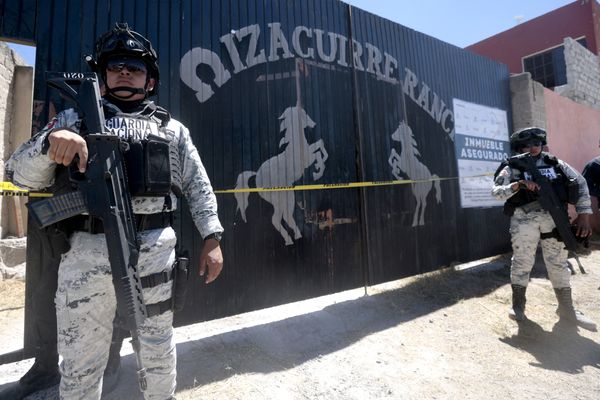
On Thursday, Buckingham Palace said she died at Balmoral Castle, her summer residence in Scotland, where members of the royal family had rushed to her side after her health took a turn for the worse.
With the death of the queen, her 73-year-old son Charles automatically becomes monarch, even though the coronation might not take place for months. It is not known whether he will choose to call himself King Charles III or some other name.
The BBC played the national anthem, “God Save the Queen," over a portrait of her in full regalia as her death was announced, and the flag over Buckingham Palace was lowered to half-staff as the second Elizabethan age came to a close.
Her funeral will be held after 10 days.
The Queen was born Elizabeth Alexandra Mary Windsor, in Mayfair, London, on 21 April 1926. Like many royals of her time and before, Elizabeth never went to a public school and was never exposed to other students. Instead, she was educated at home with Margaret, her younger sister.
Few could have foreseen she would become monarch but in December 1936 her uncle, Edward VIII, abdicated from the throne to marry the twice-divorced American, Wallis Simpson. Elizabeth's father became King George VI and, at age 10, Lilibet, as she was known in the family, became heir to the throne.
In 1947, almost five years before she ascended the throne, the 21-year-old Elizabeth promised the people of Britain and the Commonwealth that “my whole life, whether it be long or short, shall be devoted to your service."
Princess Elizabeth was in Kenya in 1952, representing the ailing King, when Philip broke the news that her father had died. She immediately returned to London as the new Queen.
"It was all a very sudden kind of taking on and making the best job you can," she later recalled.
Since Feb. 6, 1952, Elizabeth reigned over a Britain that rebuilt from war and lost its empire; joined the European Union and then left it; and transformed from industrial powerhouse to uncertain 21st century society. She endured through 15 prime ministers, from Winston Churchill to Truss, becoming an institution and an icon -- a fixed point and a reassuring presence even for those who ignored or loathed the monarchy.
She became less visible in her final years as age and frailty curtailed many public appearances. But she remained firmly in control of the monarchy and at the center of national life as Britain celebrated her Platinum Jubilee with days of parties and pageants in June 2022.
The same month she became the second longest-reigning monarch in history, behind 17th-century French King Louis XIV, who took the throne at age 4. On Tuesday, she presided at a ceremony at Balmoral Castle to accept the resignation of Boris Johnson as prime minister and appoint Truss as his successor.
When Elizabeth was 21, almost five years before she became queen, she promised the people of Britain and the Commonwealth that “my whole life, whether it be long or short, shall be devoted to your service."
The only monarch most Britons have ever known, Elizabeth reigned for 70 years over a country that rebuilt from war and lost its empire; joined the European Union and then left it; transformed from industrial powerhouse to uncertain 21st century society. She endured through 15 prime ministers, from Winston Churchill to Liz Truss, becoming an institution and an icon -- a fixed point and a reassuring presence even for those who ignored or loathed the monarchy.







